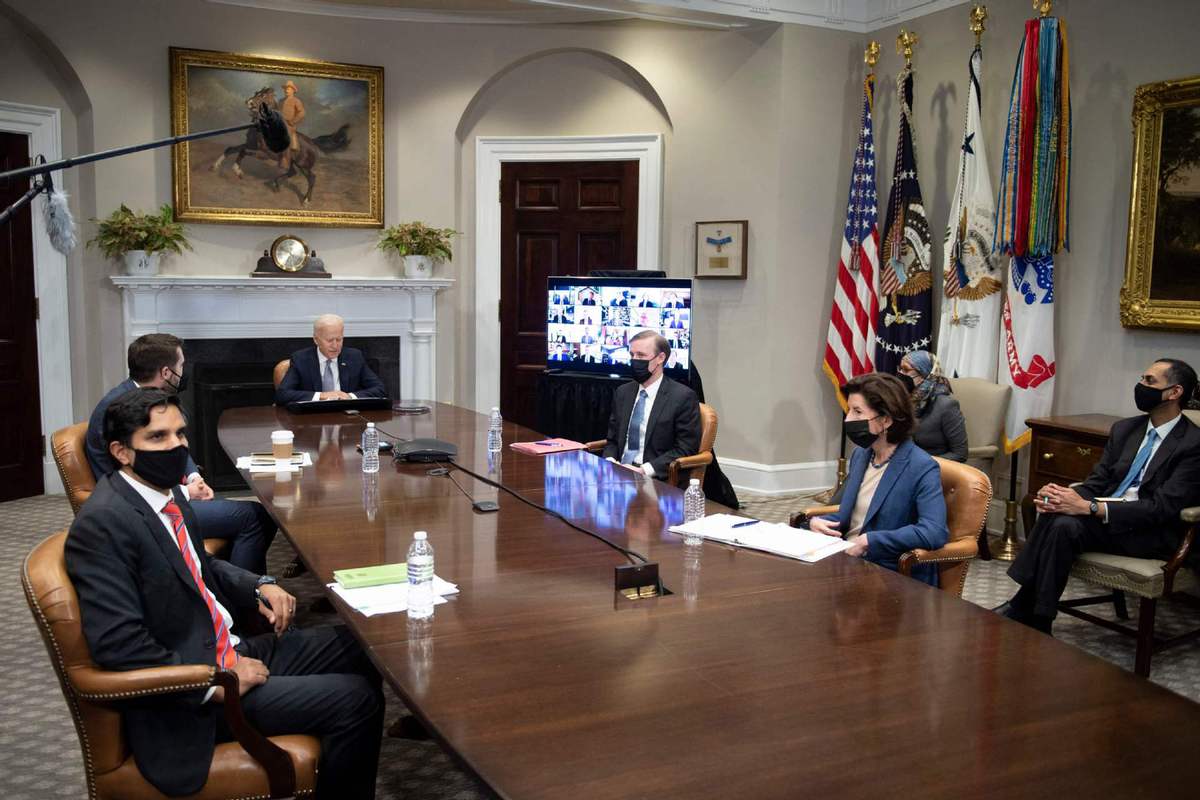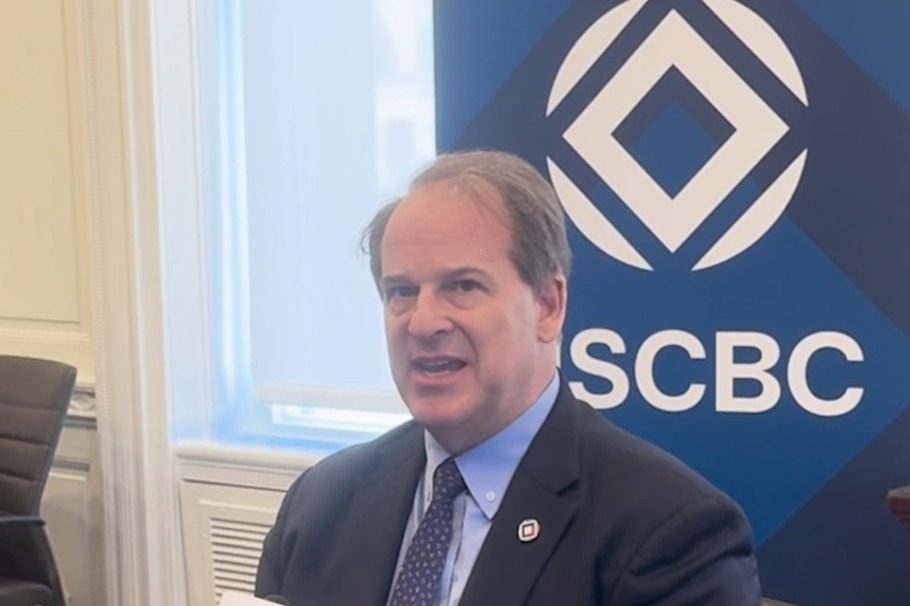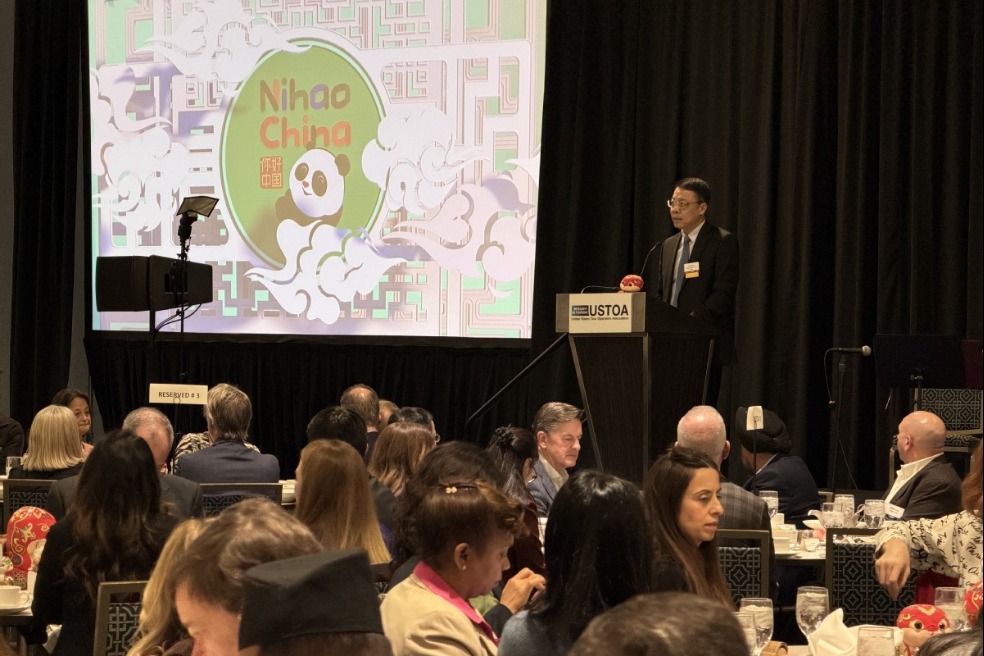US on losing bet with chip catch-up effort


Despite legislative moves, country cannot cut China from supply chains, forum told
As the United States seeks to bolster its own chip-manufacturing capabilities to counter China, experts say it will be impossible to decouple the chip industry from its strategic rival given the global nature of the semiconductor industry.
To bring the complete manufacturing process to the US is "practically impossible" in the world of semiconductor technology because of "the global nature of the entire life of semiconductors", Don Rosenberg, former executive vice-president and general counsel at Qualcomm, told a conference hosted by Asia Society Northern California on Thursday.
The semiconductor industry relies on cross-border movement of chips at all stages of production, with designers, component suppliers, producers, equipment makers, assemblers, testers and packagers spread across the world, experts say.
Syed Alam, managing director of Accenture Strategy, told the gathering: "We did the research, and it indicates that a chip and its component through the manufacturing process could travel up to 25,000 miles (40,000 kilometers) or cross border 70 times."
"It's not a one-stop shop that one plant does the manufacturing. There is a complicated supply chain, very much geographically distributed around the globe, with different companies playing a key role in each one of those components."

Semiconductors are essential components in almost every modern device. They are critical for every industry from cellphones and laptop computers to cars and aircraft.
The industry is worth $500 billion a year, but it supports $7 trillion in downstream economic activity across the global economy, according to Stephen Ezell, vice-president of global innovation policy at the Information Technology and Innovation Foundation in Washington DC.
"So semiconductors really represent the commanding heights of the modern digital economy," he said.
US companies account for 47 percent of global revenue in the semiconductor industry, with China being a key market, Ezell said.
"Thirty-six percent of US semiconductor industry sales are to Chinese enterprises, making access to the Chinese market critical to American companies," he said.
The Chinese market is critical also because the revenues from the Chinese market enable the US companies to reinvest those revenues in future generations of innovation, he said.
Declining capacity
But the US share of global semiconductor manufacturing capacity has been declining in recent decades-from 37 percent in 1990 to 12 percent today. This has spurred calls for legislation to bolster the competitiveness of the US semiconductor industry.
Aiming to bring chip production back to the US, Congress in December 2020 passed the CHIPS for America Act to provide financial incentives for domestic semiconductor manufacturing, as well as funding for research and development.
In June, the US Senate passed the US Innovation and Competition Act, which would invest about $250 billion over the next five years in technology and research to boost competitiveness against China. The act includes $52 billion in federal investment for the domestic semiconductor research design and manufacturing provisions in the CHIPS Act.
The $52 billion is far from enough, Rosenberg said. "TSMC and Samsung alone, they're each going to spend at least two or three times that amount," he said, referring to Taiwan Semiconductor Manufacturing Co and the South Korean technology giant. "A foundry today probably costs close to $20 billion to create."
Due to continuing advances in design, "you build another fab or you completely convert the existing fab", Rosenberg said.
As for TSMC, he said, the company has almost 20 fabs, with each of them devoted to the various nodes that they were built for, and the next node will lead to another fab. "This is an expensive proposition. And I don't think we've come close to being able to tell everybody here how complicated it is to build a semiconductor. It is extraordinarily complicated, with clean rooms and avoiding impurities down to 99.9 percent."
"Decoupling not only doesn't make sense, but it probably is not possible," Rosenberg said. The US should engage with China "at a level that maintains clear competition", he said.
































